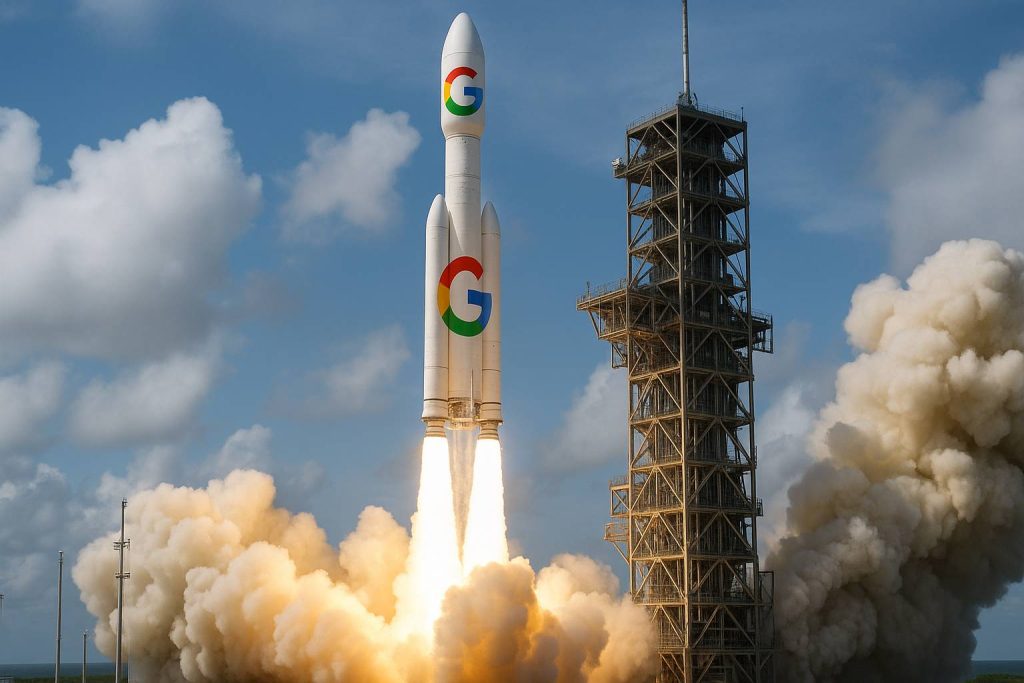Elon Musk Half-Trillionaire: Why Luxury Investment Are Heating Up
Tesla CEO Elon Musk ($TSLA) made history on October 1st, 2025, when he became the first person ever to achieve a net worth exceeding $500 billion, briefly reaching $500.1 billion before settling just below the milestone. The unprecedented wealth accumulation, driven by Tesla’s 20% year-to-date stock gains, SpaceX’s $400 billion valuation, and xAI’s artificial intelligence venture growth, demonstrated the explosive expansion of ultra-high-net-worth wealth concentration during 2025, while simultaneously highlighting the massive luxury asset demand implications that accompany rapid billionaire wealth creation and ultra-wealthy population growth across global markets.
The half-trillion-dollar milestone showcased the accelerating trend of ultra-wealthy wealth accumulation, with the global ultra-high-net-worth population now controlling $59.8 trillion in combined assets (equivalent to twice the annual GDP of the United States) and projected to grow by 31% to reach 676,970 individuals by 2030. This trend reinforces why sophisticated investors and wealth managers increasingly recognize collector cars as a critical luxury asset class, providing ultra-wealthy individuals with tangible investment opportunities that combine passion-driven ownership with appreciation potential through scarcity-driven market dynamics and historical automotive significance.
This Article Covers:
- How Musk’s $500 billion milestone demonstrates accelerating ultra-wealthy wealth concentration
- Why ultra-high-net-worth population growth drives luxury asset demand expansion
- The correlation between billionaire wealth surges and collector car market appreciation
- How investment-grade automobiles serve ultra-wealthy portfolio diversification strategies
- Why MCQ Markets provides institutional access to collector cars during ultra-wealthy expansion periods
Musk's Half-Trillion Milestone: Ultra-Wealthy Wealth Concentration Accelerates
The wealth milestone demonstrated the scale of fortune accumulation occurring at the highest tiers of global wealth distribution in 2025. Musk’s journey from becoming the first person to surpass $300 billion in November 2021 to exceeding $400 billion in December 2024 and then reaching $500 billion just ten months later showcased the exponential acceleration of wealth concentration among ultra-high-net-worth individuals. Tesla’s board announced Musk could receive a compensation package exceeding $1 trillion if he achieves ambitious targets including boosting Tesla’s market value eightfold, selling one million AI robots, and delivering an additional 12 million vehicles over the next decade.
Market observers noted the milestone reflected broader patterns affecting ultra-wealthy population growth globally. According to Altrata’s World Ultra Wealth Report 2025, the global ultra-high-net-worth population (individuals with net worth exceeding $30 million) numbered 510,810 people as of June 2025, controlling combined wealth totaling $59.8 trillion. This represented 32.4% of all wealth held by high-net-worth individuals despite constituting just 1.1% of the millionaire population, highlighting the extraordinary concentration of financial resources among the world’s wealthiest.
The ultra-wealthy population had grown seven times faster than the global adult population over the previous two decades, with projections indicating the segment would expand by 31% to reach 676,970 individuals by 2030. Asia was expected to experience the strongest growth in ultra-high-net-worth population, though North America would remain the largest ultra-wealth region. India emerged as a particular growth center, with four of the top ten fastest-growing ultra-wealthy cities including Bengaluru, Mumbai, Hyderabad, and Delhi.
Ultra-wealthy spending patterns demonstrated the significant luxury market implications of this wealth concentration. According to Altrata research, ultra-high-net-worth individuals accounted for $290 billion in annual luxury goods spending (equivalent to 21% of total individual luxury expenditure globally), $207 billion in philanthropic donations (36% of all individual giving), and controlled $30 trillion in investable assets (representing 10% of global investable capital). These spending concentrations highlighted how ultra-wealthy population growth directly translated into expanded luxury asset market demand.
Ultra-Wealthy Expansion: Luxury Asset Market Demand and Portfolio Implications
Ultra-wealthy portfolio diversification strategies increasingly incorporated tangible luxury assets as wealth concentration accelerated. UBS Global Wealth Report 2025 data indicated global wealth had grown 4.6% during 2024, with an $83 trillion wealth transfer expected to occur over the next 20 to 25 years through intergenerational and spousal succession. This massive wealth transition created sustained demand for alternative investment categories that combined passion-driven ownership with investment-grade appreciation potential and portfolio diversification benefits.
The concentration pattern extended beyond financial asset holdings into luxury goods markets. Knight Frank research demonstrated that ultra-high-net-worth individuals allocated significant portions of their wealth to passion investments including collector cars, fine art, rare watches, wine collections, and other tangible luxury categories. These alternative asset classes provided portfolio benefits including inflation hedging, low correlation with traditional equity markets, and personal enjoyment factors that pure financial instruments could not deliver.
The implications for luxury automotive markets were substantial. As ultra-wealthy population growth accelerated and individual fortunes reached unprecedented levels, demand for investment-grade collector automobiles intensified correspondingly. Ultra-high-net-worth individuals sought vehicles that represented automotive engineering excellence, racing heritage significance, and production scarcity characteristics that drove long-term appreciation independent of traditional financial market cycles.
Financial advisors serving ultra-wealthy clients increasingly recognized that when individual net worth surpassed $50 million, $100 million, or higher thresholds, portfolio allocation strategies required tangible luxury assets that provided both personal satisfaction and investment returns. Collector cars emerged as a preferred category, offering mechanical artistry, motorsports provenance, and cultural significance that resonated with ultra-wealthy individuals’ desire for meaningful asset ownership beyond pure financial accumulation.
Investment professionals managing ultra-high-net-worth portfolios increasingly recommended collector car allocation strategies, particularly for clients whose wealth derived from technology sector equity appreciation similar to Musk’s Tesla-driven fortune. The automotive collector market represented a natural diversification opportunity, offering appreciation potential completely independent of electric vehicle stock performance, artificial intelligence venture valuations, or space exploration company private market dynamics that drove contemporary billionaire wealth creation.
Alternative Investment Strategy: Collector Cars as Ultra-Wealthy Portfolio Cornerstones
The ultra-wealthy wealth concentration demonstrated by Musk’s $500 billion milestone and the broader 31% projected growth in the ultra-high-net-worth population through 2030 reinforce why collector cars have emerged as essential luxury asset holdings for billionaire portfolio construction strategies. Investment-grade automobiles provide critical benefits during periods of accelerating wealth accumulation at the highest tiers of global wealth distribution.
Investment-grade collector automobiles deliver substantial advantages for ultra-wealthy investors:
Wealth Tier Alignment: Collector car ownership aligns naturally with ultra-high-net-worth lifestyle preferences, providing tangible assets that combine mechanical excellence, design artistry, and motorsports heritage with investment-grade appreciation potential that matches the sophisticated portfolio requirements of individuals with net worth exceeding $50 million.
Luxury Spending Concentration: As ultra-wealthy individuals control an expanding share of global luxury goods expenditure ($290 billion annually representing 21% of all individual luxury spending), investment-grade automobiles capture meaningful allocation within passion investment categories that offer both personal enjoyment and financial returns.
Scarcity-Driven Appreciation: Rare Ferrari, Lamborghini, and McLaren models provide appreciation potential driven by fixed production quantities, automotive engineering significance, and collector market demand that intensifies as ultra-wealthy population growth creates expanding pools of qualified buyers competing for limited supply of historically significant vehicles.
MCQ Markets: Democratizing Collector Car Access During Ultra-Wealthy Market Expansion
While billionaire wealth surges to unprecedented levels and ultra-high-net-worth population growth accelerates globally, MCQ Markets provides investors at all wealth tiers with accessible entry points to collector car investments whose values benefit directly from ultra-wealthy luxury spending expansion and high-net-worth portfolio diversification trends. Our fractional ownership platform democratizes access to investment-grade automobiles that traditionally served exclusively ultra-high-net-worth collectors, enabling sophisticated investors to participate in the same appreciation dynamics that drive institutional collector car valuations.
The collector car market’s direct correlation with ultra-wealthy population growth makes it particularly valuable during periods of accelerating billionaire wealth creation. As individuals like Elon Musk add hundreds of billions to their net worth and the global ultra-high-net-worth population expands by 166,160 people through 2030, demand for investment-grade collector automobiles intensifies correspondingly, creating sustained appreciation pressure for historically significant vehicles with documented provenance and motorsports heritage.
MCQ Markets specializes in acquiring investment-grade vehicles that represent the apex of automotive collectibility and market desirability. Our curated portfolio includes limited-production hypercars from legendary manufacturers, historically significant models with racing provenance, and ultra-rare examples that combine engineering excellence with cultural importance. Each vehicle is selected specifically for its investment-grade characteristics including production scarcity, collector market recognition, and appreciation potential driven by expanding ultra-wealthy buyer pools competing for finite supply.
The platform’s fractional ownership structure eliminates traditional capital barriers that restricted collector car investment to individuals with net worth exceeding $30 million. By enabling accessible investment minimums, MCQ Markets allows sophisticated investors to build diversified automotive portfolios across multiple manufacturers, production eras, and collector market segments without requiring full vehicle acquisition capital typically demanded for investment-grade automobiles.
MCQ Markets leverages extensive relationships within the global collector car community, motorsports organizations, and automotive authentication networks to source exceptional acquisition opportunities. Our team’s deep industry connections provide access to vehicles that rarely appear on public markets, ensuring platform participants benefit from institutional-quality asset selection that mirrors the acquisition strategies employed by ultra-high-net-worth private collectors and family offices.
The collector car market has demonstrated remarkable consistency in delivering appreciation that correlates with ultra-wealthy population growth cycles. Knight Frank luxury investment indices show collector automobiles have produced 185% overall appreciation over the past decade, while maintaining low correlation with financial market volatility. This performance history validates the asset class’s credibility as a legitimate portfolio diversification tool during periods of accelerating wealth concentration.
MCQ Markets provides investors with direct exposure to luxury asset appreciation driven by ultra-wealthy spending expansion and high-net-worth portfolio allocation trends. As billionaire wealth continues growing (with the top ten U.S. billionaires alone adding $365 billion over the past year) and ultra-high-net-worth individuals allocate increasing percentages toward tangible luxury investments, collector car values benefit from sustained demand pressure that operates independently of traditional financial market cycles.
Each vehicle in the MCQ Markets portfolio undergoes comprehensive authentication and provenance verification to ensure investment quality meets institutional standards. Our experienced team’s expertise in automotive history, motorsports significance, and collector market dynamics protects platform participants from counterfeit risks and provenance disputes that can compromise individual collector investments, providing professional-grade asset management that mirrors ultra-high-net-worth family office practices.
Investment Outlook: Positioning for Ultra-Wealthy Luxury Demand Growth
Elon Musk’s achievement of $500 billion net worth, coupled with projections that the global ultra-high-net-worth population will expand 31% to reach 676,970 individuals by 2030, created valuable insights for investors seeking exposure to luxury asset markets during periods of accelerating wealth concentration. The milestone demonstrated why positioning portfolios to benefit from ultra-wealthy spending expansion requires tangible assets that capture increasing luxury goods demand and high-net-worth diversification trends.
This ultra-wealthy expansion pattern reinforces fundamental investment principles about alternative asset allocation during wealth concentration cycles. When individual billionaires add hundreds of billions to their net worth and ultra-high-net-worth populations grow seven times faster than global adult populations, the importance of luxury asset exposure becomes paramount for capturing sustained appreciation driven by expanding pools of ultra-wealthy buyers competing for finite supplies of investment-grade tangible goods.
Musk’s wealth milestone affected valuations across luxury asset categories, demonstrating how billionaire fortune growth creates broad-based demand impacts extending beyond individual purchases to systematic revaluation of scarcity-driven collectibles. This concentration dynamic highlights the importance of collector car allocation strategies that position investors to benefit from ultra-wealthy luxury spending expansion projected to continue through 2030 and beyond.
MCQ Markets addresses this opportunity by providing institutional-quality access to collector car investments through our proven fractional ownership platform. Our investment structure allows sophisticated investors at all wealth tiers to build positions in investment-grade automobiles that benefit directly from ultra-high-net-worth population growth and billionaire wealth accumulation trends.
As the ultra-wealthy population expands by 166,160 individuals through 2030 and controls an increasing share of global luxury goods spending ($290 billion annually and growing), collector car investments continue operating in markets where demand intensifies as supply remains permanently fixed by historical production quantities. This fundamental dynamic makes investment-grade automobiles particularly valuable for investors seeking appreciation exposure correlated with ultra-wealthy wealth concentration and luxury asset market expansion during unprecedented billionaire fortune growth periods.





